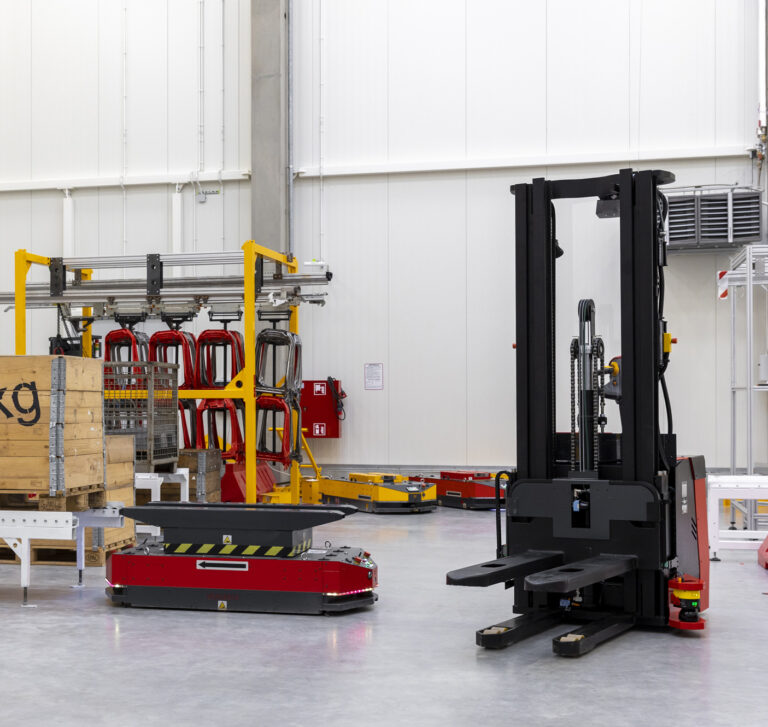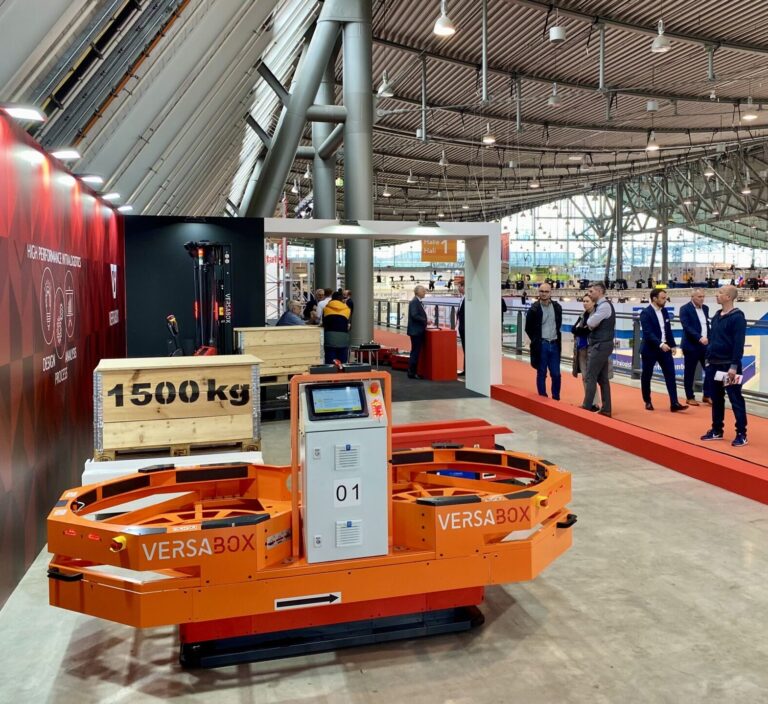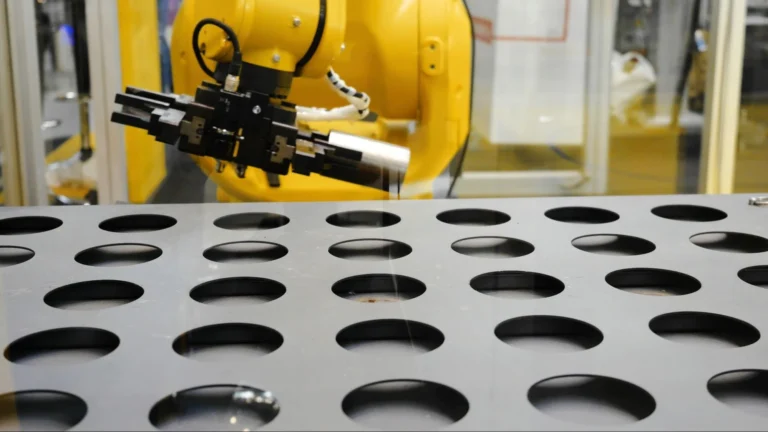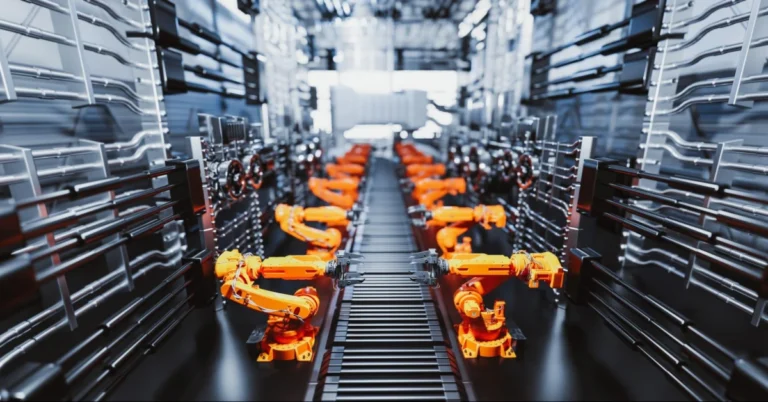Robotics is one of the main parts of the so-called Industry 4.0. They can be implemented in many places, but warehouses are definitely one of the most popular. Let’s take a closer look at warehouse robots and the benefits they can bring.
What is a warehouse robot?
A warehouse robot can be described as a fully automated or even autonomous machine that augments or replaces human effort in a workspace. In this context, each robot is a two-part system – the machine itself and its controlling software.

Warehouse robots can be roughly divided into two groups – specialized units, designed specifically to continuously perform a single task, and modular bots. The first ones are rather self-explanatory (e.g. a robotic arm that moves material between warehouse slots), but the other robots might need some clarification. In simple words, modular robots can be reconfigured practically on the fly to perform various tasks at hand. To achieve this, you need to change the robot’s directions in its supervising software and switch its work module to a different one. For example, autonomous trolleys can be equipped with a roller module that lets it pick up cargo directly from conveyor belts or a lift module for carrying pallets.
Thanks to the rapid technological advances in the last few decades, robotics companies can provide us with much more sophisticated warehouse robots than a few years before. Today’s robots are much more than just a simple tram stuck to their rails, but much more sophisticated machines able to freely move around without any safety hazards. Some models are even capable of dealing with fully automated storage and retrieval systems of delicate items or even whole shipping containers.
Types of warehouse robots
Warehouse robots come in various forms and sizes, but looking from the outside, they can be roughly divided into a few big groups:
Automated Guided Vehicles
AGVs move only on fixed tracks, consisting of markers embedded into the warehouse floor (magnetic tape-based navigation) or markings on the wall identified by their onboard laser sensors or optic cameras. They come in various sizes, from teams of big trolleys resembling an indoor train, through smaller carts (AGCs) transporting smaller cargos, to simple Goods-to-Person (G2P) units that pass singular objects to human workers stocking warehouse shelves.
In general, AGVs stop in their tracks when they detect obstacles on their routes (e.g. people or dropped cargo) and wait until the way is clear again. Each such occurrence is automatically reported in warehouse management systems (WMSs) that can be used for controlling everything that goes on in the warehouse. A WMS can be used on their own or be integrated into bigger systems that govern the whole company.
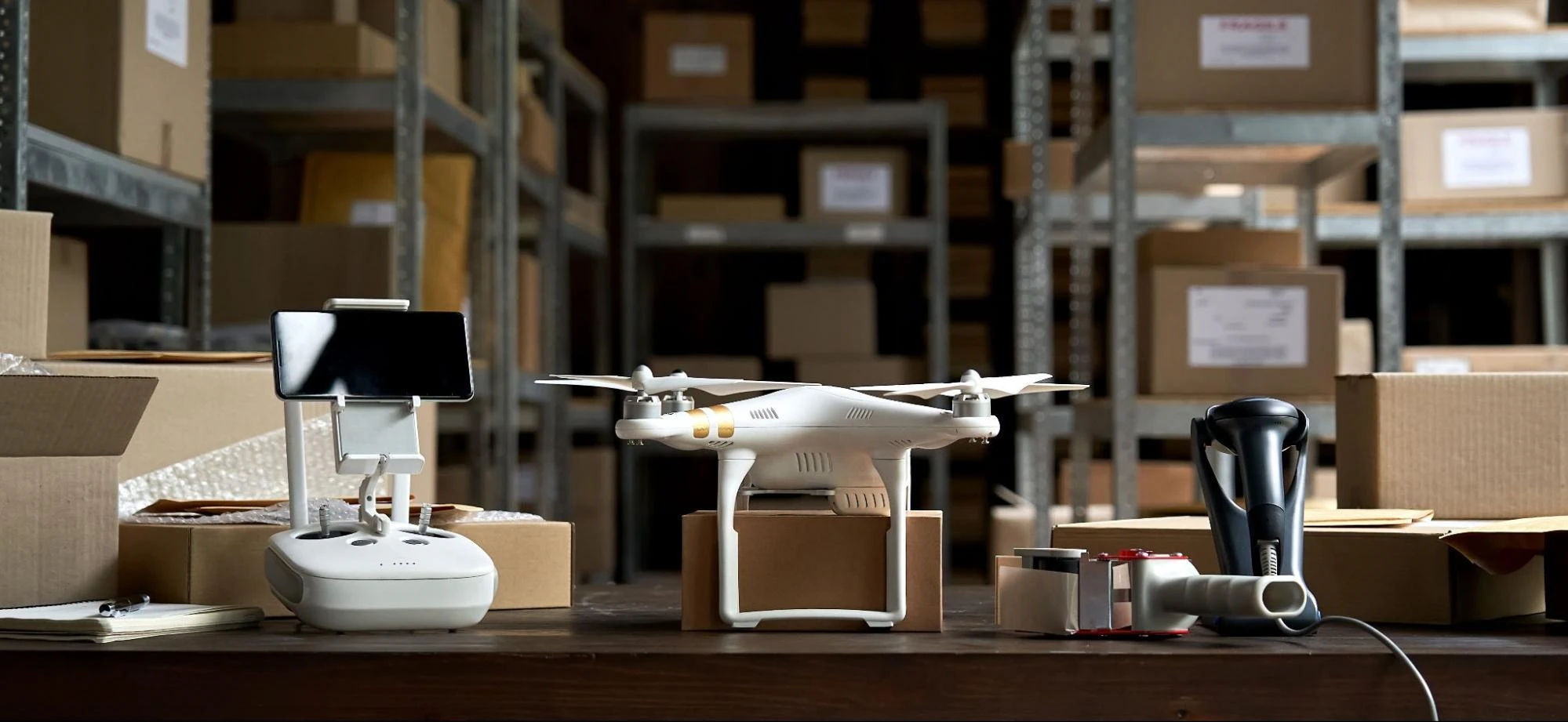
Aerial Drones/Unmanned Aerial Vehicles (UAVs)
These small, flying robots zip through the air at high speeds and can fit into places too tight for humans. In warehouses, drones are mainly used for inventory scanning – they fly through the storage area, get into a given spot, estimate the current stock and automatically update inventory data. Drones can be fully automated or controlled by a dedicated employee.
Autonomous Mobile Robots
As their name suggests, AMRs are fully automated units that can work completely on their own. Contrary to AGVs, autonomous mobile robots don’t need strictly defined paths to move around – thanks to computer vision and advanced sensors, they can choose their own routes, based on the current situation and rules set in their programming. Such advanced navigation systems allow AMRs to actively avoid any potential obstacles and update their paths to the most efficient routes in real time.
All you need to do to implement such robots is to make a manual first drive through the facility and set their goals. Thanks to their optics, AMRs will scan their surroundings and create a virtual map of their surroundings. This map can be later altered by e.g. adding pick up/drop off points or setting special areas like speed limit zones. An AMR, such as VERSABOT, is therefore ready to work mere hours after being taken out of the box.
Robotic arms
Such arms can be used for more complicated manipulation of objects – they can pack goods, pick them up, pass them along, or even construct pallets and assemble products delivered in parts. Articulated robotic arms can be stationary or attached to moving platforms. The second ones can e.g. follow warehouse workers around and help them in their tasks.

Benefits of warehouse robotics
Warehouse automation and implementation of a digital warehouse management system will not only speed up warehouse operations, but also bring significant benefits to the table. Here are some of the main ones:
- Increased work safety – with the introduction of autonomous vehicles and other robotic solutions, you can say goodbye to many safety concerns. The robots can take over the most dangerous tasks, like handling hazardous materials, storing and picking goods from high stacks, or moving heavy loads around. They can also carry out all the repetitive tasks in the supply chain, which can greatly boost the morale of human workers. They will no longer have to deal with the most mundane tasks and can be delegated to more ambitious work. Moreover, warehouse robots classified as collaborative robots (or cobots for short) can safely work in workspace shared with human workforce without the risk of accidents and injuries.
- Higher productivity and adaptable workforce – warehouse robots can work around the clock with the same efficiency throughout. They don’t need extensive training or long holidays and can be easily adapted to higher demand when needed. Plus, adapting even a few robots gives your workforce much flexibility, allowing your staff to quickly adjust to the flow of the market. For example, you won’t have to worry about staff shortages in the holiday season or send in ‘green’ employees to cover for their more experienced colleagues in case of emergencies. Autonomous robots with artificial intelligence on board can take on multiple sectors of supply chains – a single unit can easily cover for two or three employees when the need arises.
- Boosted brand image – when you adapt cutting-edge warehouse technology, you can use it as an important part of marketing. Robotics technology is a clear sign that you own an innovative brand that isn’t afraid to challenge the future and delivers the best experience to its customers.
- Higher customer satisfaction – automation technology can significantly boost the speed of order fulfilment and reduce the number of errors made by many warehouse operators. And that’s the shortest road to boosting customer satisfaction – automated solutions and advanced robots can and will give you the competitive edge you need to get new customers and reap those 5-star ratings.
Warehouse robotics – summary
The warehousing industry is one of the most impacted by the new technologies such as machine learning, Internet of Things (IoT), and AI-powered robots. Implementing robotics technology allows for running a warehouse autonomously – with its solutions you can store and transport inventory more efficiently, make warehouse aisles narrower (which means more storage space), speed up inventory counts and many more. So if you want to future-proof your company, embracing robots is the way to go.



